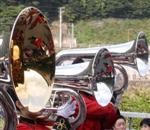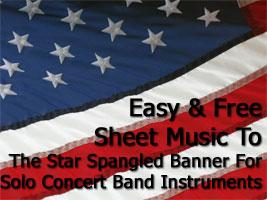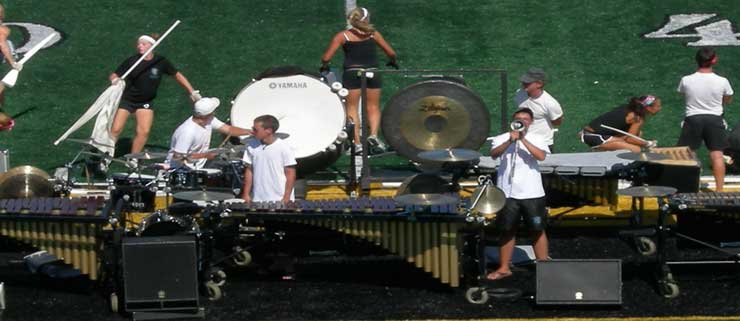 Brass musical instruments are generally made from alloy of chemical elements copper and zinc. The most common of these brass instruments are trumpet, cornet, bugle, French horn, trombone, tenor horn, baritone horn, tuba, sousaphone, and euphonium. The brass instruments offer pomp, majesty and fanfare music.Â
Â
Brass musical instruments are generally made from alloy of chemical elements copper and zinc. The most common of these brass instruments are trumpet, cornet, bugle, French horn, trombone, tenor horn, baritone horn, tuba, sousaphone, and euphonium. The brass instruments offer pomp, majesty and fanfare music.Â
Â
The brass instruments make a sound when air is blown by the player through a detachable metal mouthpiece into a metal tube called a "bore" into which air is blown. The sound is made by the vibration of the column of the air inside the instrument the moment the player blows directly through the mouthpiece.
The player uses three or four valves (or on the trombone, a slide) to alter the length of the metal tube, and combined with different lip tensions and air pressure. The instrument then produces notes of different pitch. The tighter lips mean higher notes while the slacker lips mean lower notes. Â
Sometimes they use a "mute" to reduce the volume that comes out. It is a pear-shaped stopper which is pushed into the bell of the instrument.
Types of Brass Instruments
- Trumpet and Cornet - are the smallest and most popular instruments of the brass family known for their majestic sound. Both cornet and trumpet have three valves and sound is produced in a similar way. It has a cylindrical bore like the baritone horn and trombone. The cornet is smaller than the trumpet but has the same range of notes as a trumpet. The trumpet is often a good choice for beginners as progress on it comes quickly.
- Bugle - has neither valves nor a slide but requires the player to alter lip-pressure to change notes. It is used for providing calls in the army.
- French horn (or just 'horn') - is derived from French hunting horn during the mid-17th century. Noteworthy, this instrument took its place in the classical orchestras of 18th century, including the music of Mozart and Haydn. It is sometimes used as a solo instrument. Â
- Trombone - The word 'trombone ' is derived from the Italian for large trumpet and dates back to the Renaissance. This is the only member of the brass family that has a slide mechanism rather than valves, although a valved version is available. It has a cylindrical bore like the baritone horn and trumpet. The most commonly played modern instrument is the tenor trombone in B-flat.  Â
- Tenor Horn - was invented in the mid-19th century as the alto voice in the saxhorn family developed by Adolphe Sax, creator of the saxophone. This should not be confused with the French horn. Music for the tenor horn is written in the treble clef.
- Tuba - is similar to the euphonium in appearance but bigger. Although it is large and somewhat unwieldy, it is always in demand as it plays the bass part in ensembles. There is usually one tuba in an orchestra. The tuba's sound is soft and warm. Â
- Baritone Horn (or baritone) - is pitched in B-flat. It has a cylindrical bore like the trumpet and trombone. It uses large mouthpieces like those of trombone or euphonium. A baritone is neither too heavy nor too large to carry around. Like the tenor horn, it belongs to the saxhorn family.
- Sousaphone - curls around the player with the bell resting on the left shoulder. It was designed by the American bandmaster John Philip Sousa.Â
- Euphonium - looks like a large baritone horn. One distinguishing feature is its wider bore, the tube into which air is blown, is almost conical. For a big instrument, the sound is quite gentle.
Hearing These Instruments
Brass instruments are played in brass bands, military and marching bands, big bands, jazz bands, orchestras and many other ensembles. Some instruments are used mainly in bands rather than as orchestral instruments. Substantial quantity of music has also been written for individual instruments and piano.
Brass bands have an exciting music of their own. Some of them are mostly junior and training bands for children, and eventually becoming an ensemble. Competition playing is encouraged in some local areas, which is a great thing for learning and setting up standards of playing.
Orchestral brass players follow a musical path distinct from brass band players. In the symphony orchestra, there are four brass instruments: the trumpet, the French horn, the trombone and the tuba. Four Horn Concertos by Wolfgang Amadeus Mozart and Trumpet Concerto by Franz Joseph Haydn are famous music for brass instruments. Â Â Â Â Â
Â
Brass Instrument Players
Brass players may have the ability to drown out the other orchestral instruments by the very nature of their volume. Unlike the woodwind players who might still be putting their instruments together or string players still trying to tune up, brass players can already take their instruments out of the case and begin playing.
Children starting on brass may experience some discomfort from tired lips or at times a sore finger. A good instructor will guard against excessive discomfort while building up the endurance of the brass player.







 Scroll down to view the comparison chart of over a dozen different portable digital audio recorders.
Scroll down to view the comparison chart of over a dozen different portable digital audio recorders.